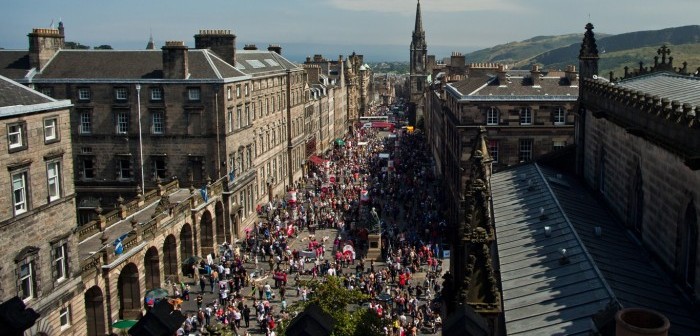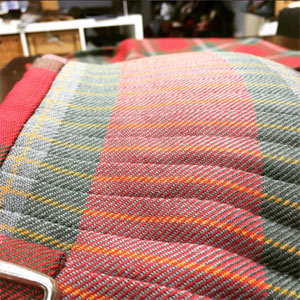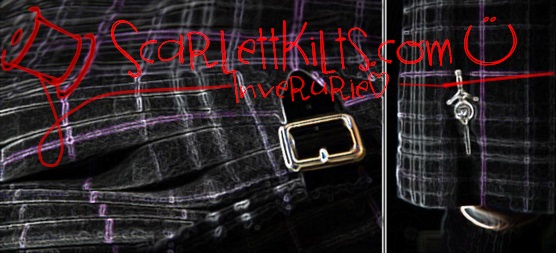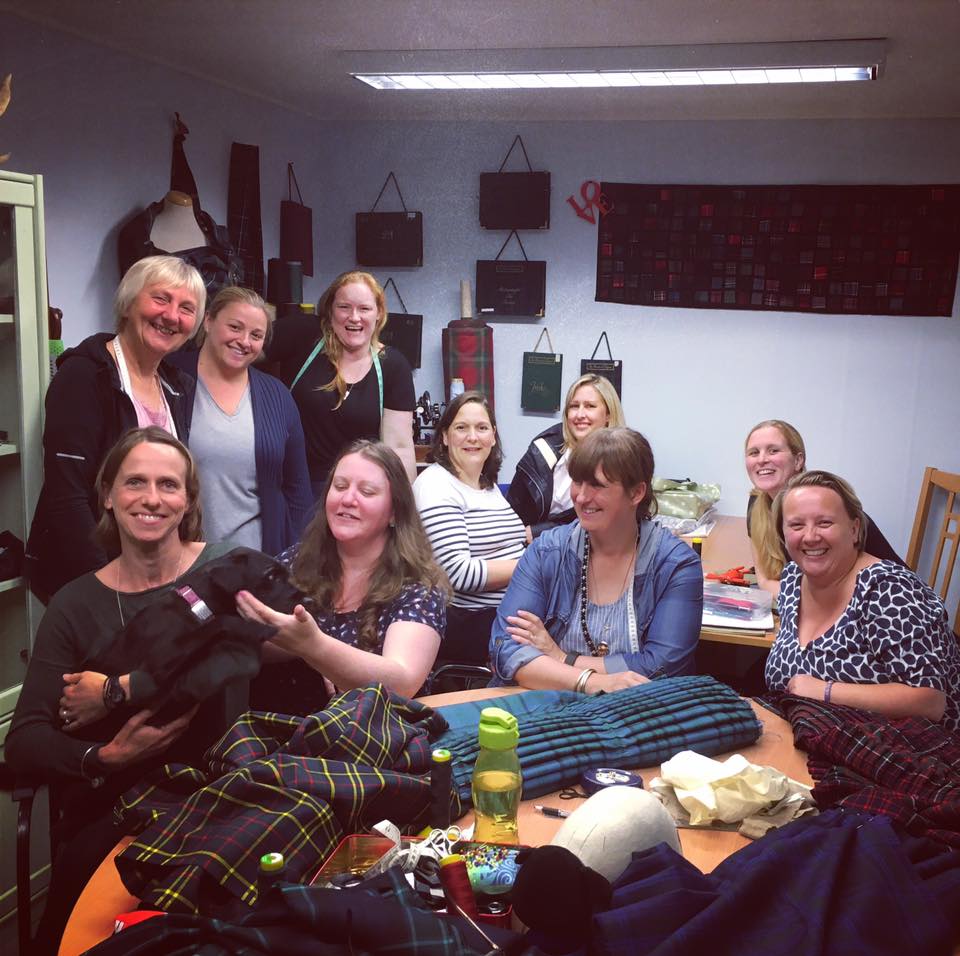So, you’ve decided now is the time to buy a kilt. Whether it’s because you’ve rented a kilt so many times you could’ve bought a new one twice over, or it could be for a special occasion or you’ve just decided to go for it. The decision has been made.
A lot of thought goes into the purchase of your first kilt and so it should, this is a garment that will last a lifetime and maybe even be passed down in the family. However, this is when the questions start.
Where do I start?
What tartan do I choose?
Where do I go?
First thing to start off with is to decide what tartan you are going to wear. This can seem quite a daunting task given there are over 10,000 to choose from, but not to worry not even a quarter of these are woven. A lot of people are proud to choose their family tartan in which case you may only have between 2-8 tartans to choose from. If your family name has no tartan, it could be a sept of a larger clan, your family came under the protection of a larger clan chief so you can wear their tartan. Then there are district tartans, you can wear the tartan of the area you or your family come from. There are also a lot of generic tartans available. Or, and here’s the best bit, you could just choose one you like, the clan the tartan comes from should be honoured that you have decided to wear their tartan.
Now comes the scary part – ye auld kilt shops duh duh daaaaaaaaa
For all you traditional shoppers out there, Edinburgh’s Royal Mile would seem the first logical step. However, you will have to fight with all those tourists and wade through all the tartan tat, jeezo, I’m tired just thinking about it. There are a couple of traditional kiltmaker stores left mmmm, are there? yes I think so, yeah there must be. Anyhoo, you will notice kilts will vary in price massively for the £40 tat kilt to £800. Not to worry though you can avoid the crowds on the Royal Mile as there are a lot of Kilt shops around Scotland.

Once you find a nice store; now comes another question do you want Hand sewn or Machine sewn? A hand sewn kilt is going to be completely bespoke, made to fit your exact measurements and if made correctly will have room for growth, not that you’ll need it 😉. The traditionally hand sewn kilt is made with a lot of care and attention, calculating exact pleat sizes, then making sure they shape into the small of the back making a perfect fit and the kiltmaker takes a lot of time working out the sett of the tartan to ensure it matches the front apron, by someone who is proud of their work, it can take between 16-20 hours to make.

The machine sewn kilt is made in a factory using cut outs of average sizes. There is a factory in Glasgow that is supplying most Kilt shops out there. Some unscrupulous retailers are charging around the same for these kilts as they would for a hand sewn and using phrases like Hand finished or Hand tailored to sell the kilt. So, make sure you know what you’re getting.
Do you want a mediumweight or heavyweight kilt?
There will be a lot of retailers that will try to convince you that heavyweight is best, it hangs well, stays in shape and will stand up to anything. Whilst these things are true, they are basing it on someone who will be wearing the kilt a lot. Most kilt wearers will only be wearing it for special occasions and so a mediumweight, which incidentally hangs just as well, stays in shape, if made correctly, and will stand up to most things. Obviously, the heavyweight is more expensive. There’s one reason retailers prefer it. However, there are a couple other reasons you would choose heavy or mediumweight. The heavyweight kilt does lend itself better to the larger gentleman and the mediumweight looks so much nicer on a wee skinny malinky. It will also depend on the mill, sometimes the tartan you want will only be woven in one or the other. A word of warning though, please do not go for a lightweight kilt. It may seem like the obvious choice if you live in warmer climes but the lighter the cloth the more it will stick to you and crush. We only use lightweight tartan for child’s kilts and ladies kilted skirts. If anyone tells you different…run…
Do you get less than 8 yards? No……. stick with 8 yards. Some places might recommend, if your slim, a 7 yard but you might not be that slim forever (from my own personal experience) and you want the kilt to be able to be adjusted when needed. The only time you would go for a 9 yard would be if you were over a 42″ waist and that is only so the kiltmaker can get a good amount of pleats in the back.
Hopefully the kilt shops you go into will give you all this information in fact they should give you a lot more. If you are still a bit unsure, and I have totally terrified you, there are kilt shops out there that are actually run by traditionally trained kiltmakers, so you can meet your kiltmaker and ask them anything, well almost 😉.
‘True’ in Inverness, Irene is a beautiful kiltmaker and was trained by, what was at the time, considered the best.

‘Scarlett Kilts’ in Aberdeenshire, a family run business, Beverley Scarlett, an amazing and well respected kiltmaker, has trained up her daughter in the art and they have set up the business together.

‘ScotClans’ in Edinburgh, another family run business, where you’ll also find yours truly.

We have also set up ‘The Kiltmakery’ a community of traditionally trained kiltmakers that can come into the workroom, no matter who they’re working for, bounce ideas off or help one another and of course chat. As the majority of kiltmakers work from home it can be quite a lonely profession.

So who can be bothered with shops these days what about online I hear you say, well;
Back in 2000 a lot of retailers in the trade were adamant that you could not sell a kilt online and websites were a waste of money. Aye, they’re all clambering to get online now and a wee bonus is you won’t get a pompous ‘expert’ who’s never made a kilt in their life try and sell you one in a lovely auld worldly shop. Now that is a shame.
A lot of Traditional kiltmakers have now gone online and set up their own web and social media pages, cutting out the middleman, as it were, the kilt shops. The tide is turning, gone are the days the kiltmaker needed the retailer for orders and so could be treated and paid atrociously. You can now deal directly with the kiltmaker. Incidentally the three I’ve mentioned above are also online 😉
There are plenty of websites out there that not only can sell you the kilt but can also help you with information on tartans, clans etc and there’s nothing wrong with picking up the phone and speaking with them. Most will have comprehensive measurement forms and if there is something that doesn’t look quite right on your form, any kiltmaker worth their salt will contact you just to be sure.
At the end of the day you are not just buying a kilt you are gaining an amazing experience.
In fact just forget everything I’ve said above and give me a wee bell I’ll help you out 😉 nikki@scotclans.com

Nikki:
If you have a few minutes and patience would you be able to direct me in:
1. Designing a tartan for my old boarding school?
I have been playing around with one of the softwares and can get a few things that look ok
2. Registering the tartan with the registry: I get the fee and weekly get updates.
3. Finding someone to produce the yards and yards but not 100’s of yards.
4. Determining person do do vestments for clergy: Protestant episcopal thank you.
5. And last, someone to do a complete dress for the headmaster.
I wish to purchase a kilt for my teenage son in his family clan.BELL. But I would be grateful if you could send a picture of correct name of the particular kilt.
Kind regards
Mrs Bell